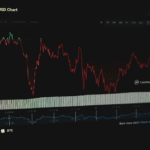
Market depth refers to the ability of a market to absorb large orders without significantly affecting the price of the asset. It’s a vital tool for traders to assess liquidity and understand the buying and selling interest in a particular asset. Market depth is visualized through the order book, which lists all the buy and sell orders, providing a snapshot of the supply and demand dynamics. Analyzing this data allows traders to make more informed decisions, especially when executing larger trades or planning entry and exit points.
Interpreting the Order Book
The order book is a real-time list of buy and sell orders in a market. It’s divided into two sides: bids (buy orders) and asks (sell orders). The prices on the bid side show the highest prices that buyers are willing to pay, while the ask side shows the lowest prices that sellers are willing to accept.
The order book reveals not only current prices but also the volume of orders at each price level. Traders can interpret this data to gauge market sentiment. For example, if there’s a large volume of buy orders at a certain price, it may indicate strong demand and suggest a potential price floor.
Analyzing Buy and Sell Walls
Buy walls and sell walls refer to large blocks of buy or sell orders at a specific price level. These walls can significantly impact market price movement. A buy wall typically indicates strong support for an asset at a certain price. If a buy wall is large enough, it can act as a barrier to price declines, suggesting that traders are willing to step in and purchase the asset if it falls to that level.
On the other hand, a sell wall suggests resistance. When a large number of sell orders are clustered at a specific price, it indicates that sellers are ready to offload the asset if the price reaches that level, potentially preventing the price from rising further.
Using Market Depth to Anticipate Price Movements
Market depth analysis is a powerful tool for anticipating price movements and refining trading strategies. By studying the order book and buy/sell walls, traders can predict potential support and resistance levels. For example, a large sell wall could indicate a strong resistance level, which may prevent the asset’s price from rising quickly.
Similarly, a large buy wall can suggest strong support, which might prevent a significant price drop. Traders can use this information to time their trades, either by positioning themselves ahead of price moves or by waiting for confirmation that a wall has been broken.
Moreover, sudden changes in the order book can signal shifts in market sentiment. A rapid reduction in sell orders could indicate bullish sentiment, while a sharp increase in buy orders may suggest upcoming price increases.
Refining Trading Strategies with Market Depth
Traders can refine their strategies by integrating market depth data into their decision-making processes. For instance, large buy walls may present opportunities to enter long positions, while sell walls could indicate areas to place stop-losses or take-profit orders.
Scalpers and day traders often use market depth to identify short-term price fluctuations and trade the order flow, while long-term investors may utilize depth analysis to enter or exit positions with minimal slippage.
Ultimately, understanding market depth allows traders to better navigate volatile markets, helping them avoid price manipulation tactics and make more informed trading decisions.
Enhance Your Digital Asset Strategy
At Kenson Investments, we excel in digital asset portfolio support, focusing on blockchain assets and DeFi services. Our approach emphasizes transparency and strategic management to support your financial goals.
Connect with our digital asset specialists today to enhance your digital asset strategy!
Disclaimer: The information provided on this page is for educational and informational purposes only and should not be construed as financial advice. Crypto currency assets involve inherent risks, and past performance is not indicative of future results. Always conduct thorough research and consult with a qualified financial advisor before making investment decisions.
“The crypto currency and digital asset space is an emerging asset class that has not yet been regulated by the SEC and US Federal Government. None of the information provided by Kenson LLC should be considered financial investment advice. Please consult your Registered Financial Advisor for guidance. Kenson LLC does not offer any products regulated by the SEC, including equities, registered securities, ETFs, stocks, bonds, or equivalents.”














